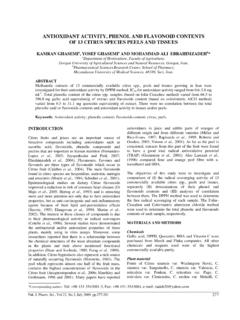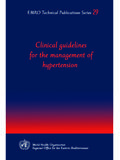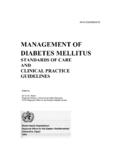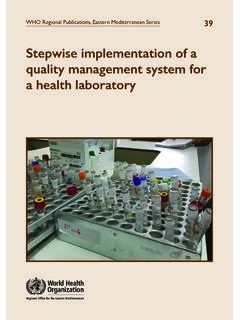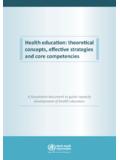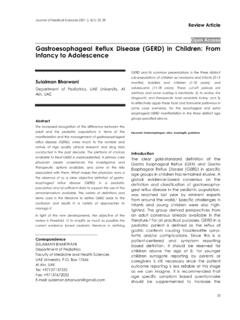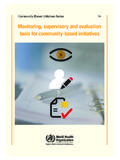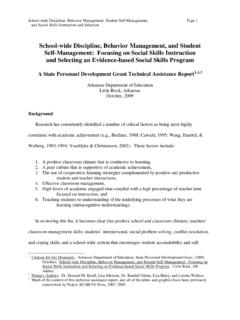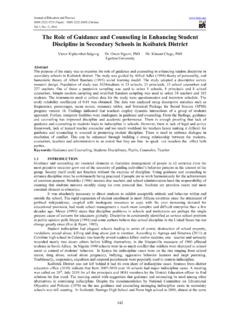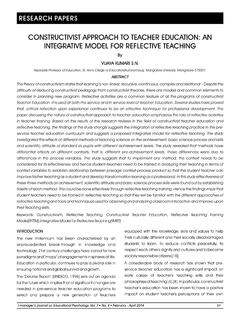Transcription of A Systems Thinking approach for responding to the COVID …
1 872 CommentaryEMHJ Vol. 26 No. 8 2020A Systems Thinking approach for responding to the COVID -19 pandemic Imad Hassan,1 Fatima Obaid,1 Roa Ahmed,1 Lobna Abdelrahman,1 Sara Adam,1 Omiema Adam,1 Mohammed Alfatih Yousif,1 Khobieb Mohammed1 and Tayseer Kashif11Al Tababa Knowledge Translation Unit, Al Tababa Advanced Training Center, Khartoum, Sudan. (Correspondence to: Imad Hassan: Hassan I; Obaid F; Ahmed R; Abdelrahman L; Adam S; Adam O; et al. A Systems Thinking approach for responding to the COVID -19 pandemic. East Mediterr Health J. 2020;26(8):872 876. : 07/05/20; accepted: 06/07/20 Copyright World Health Organization (WHO) 2020. Open Access. Some rights reserved. This work is available under the CC BY-NC-SA IGO license ( )IntroductionThe human, social and economic costs of the COVID -19 pandemic are enormous. It is paramount that effec-tive control strategies are implemented especially in resource-poor countries to initially mitigate and finally control this novel infection.)
2 Systems Thinking is con-sidered a paradigm shift in human Thinking . It first ap-peared in the business and management arena but has spread to all disciplines or Systems , especially when the human factor is a pivotal element, , in social Systems . It was first publicized by a Nobel prize winner, Professor Peter Senge in his book, The Fifth Discipline (1). The World Health Organization (WHO) has in a recent landmark publication, as well as among some international experts, strongly advocated the employment of a Systems Thinking approach in formulating plans for resolving complex social and health issues (2); this includes the fight against COVID -19 (3). Systems Thinking is an indispensable tool for quality improvement (4) and has shown promise in the fight against Human Immunodeficiency Virus infection and Hepatitis C (5).
3 Understanding the conceptA system is defined as an entity with interrelated and in-terdependent parts that are working together to achieve a common purpose; health care is considered a system . At its core is the concept of components interdependence at multiple levels. Any change in one part of the system af-fects the part and the whole system . Areas where system interventions produce higher impacts (using an equiva-lent input), are termed strong-leverage points. The COVID -19 pandemic has so vividly brought this Systems interconnectedness to the forefront of human Thinking . As a health-care issue, the COVID -19 pandemic resulted in unprecedented impacts on all domains of life economy, entertainment, transport, education etc. Additionally, it highlighted another critical domain in the Systems Thinking mindset the domain of unintended consequences . The latter will inevitably materialize as side-effects to any intervention used to control the pandemic.
4 Examples are the negative impacts of social distancing, curfew, market closures, etc. on people s livelihoods, mental health, domestic violence and other non- COVID -19 medical ailments (6 9). How to practice Systems Thinking ? Systems Thinking is a holistic approach to better under-standing of how the system elements interact with each other over time, the root-causes of system defects, and the right approach for a highly effective problem - solving intervention (strong leverage areas). Systems Thinking facilitates an in-depth understanding of system dynam-ics. Its tools enable its users to re-design their Systems , thereby radically creating the results they truly desire thanks to a methodology for identifying the root caus-es and critically selecting and focusing on the right strong-leverage areas . There are 5 pivotal steps in Sys-tems Thinking : 1) root cause analysis, 2) selection of and focusing on strong-leverage areas, 3) system design or redesign coupled with 4) measures to nullify the impact of any unintended consequences resulting from these interventions and 5) continuous learning and improve-ment from the whole exercise.
5 One simple tool for identifying and categorizing the root causes, thus pinpointing the leverage areas, is the Iceberg Tool (10). The latter stratifies the issue or problem under consideration and its root causes into 4 elements: 1) the event (the problem ); 2) the underlying pattern (why it happened); 3) the structures directly responsible for the pattern; and 4) The underlying cultural and mental models that maintain these structures and facilitate the persistence of the problem . Figure 1 portrays the Iceberg Tool and Figure 2 the Populated Tool for the problem of the COVID -19 pandemic in a resource-poor country. Systemic structures and mental models are considered the strong-leverage points that system leaders should focus on when dealing with complex social problems and conflicts. The significance and importance of focusing on interventions in the mental model domain were the motivators for a joint New York University and UNICEF initiative to design a course for a strategic global behavioural communication intervention to deal with infectious diseases epidemics (11).
6 Another Systems Thinking tool for depicting these strong-leverage areas, thus facilitating their incorporation as building-blocks for a highly effective system , is 873 CommentaryEMHJ Vol. 26 No. 8 2020the Biomatrix Tool, which emanated from Biomatrix Systems Theory (12). Its seven components constitute the building blocks for any effective system . They are the pillars for any transformational project, whether it is a population-based or government intervention, organizational intervention, hospital, department or clinical unit intervention or establishment, etc. Unlike the classic description of a system with only its 3 basic components (structure, process and outcome), the Biomatrix tool smartly incorporates 4 extra indispensable elements for comprehensive and successful system design or redesign.
7 Thus, one may utilize it to build a comprehensive anti- COVID -19 system for fighting the pandemic. Numerous interventions are recommended to prevent or slow the spread of COVID -19 infection (13 16). Table 1 depicts the seven elements, their definition and their relevant practical administrative components or actions for such a system . A major and deterministic leverage-point for establishing this programme is purely administrative and falls squarely on government, professional and community evidence that a system approach worksA recent Systematic Review (17), as well as experience from several countries that managed to mitigate COV-ID-19 infection employing elements in the system ap-proach above, are worth referring to. Quarantine, es-pecially if started early on and is combined with other system elements above, is very effective in reducing patient numbers and fatalities (17).
8 South Korea applied a mitigation strategy thereby avoiding major social dis-ruption actions, , no true lockdown (18). Current daily figures for new infections hardly reach 50 to 100 cases. Figure 1 The Iceberg Tool: Below the water line, one can notice patterns of behaviour enforced by the structure of the system and sustained by mental is a knee-jerk reactionResolution is by anticipation and preventionResolution is through designing or redesigning the system Transformative resolution is through impacting the negative mental modelsWeak leverage pointsWeak leverage pointsStrong leverage pointsStrong leverage pointsProblem or events (symptoms)Patterns (trends)Underlying systemic structureMental models-personal & social Thinking & behaviourThe Water LineFigure 2 The Iceberg Tool depicting the root causes of a failed response to a COVID -19 epidemic and the strong leverage points for effective actionStrong leverage pointsStrong leverage pointsOverwhelmed health services with unprecedented high mortality rates (both COVID -19 related & unrelated)
9 EventsPatternsSystemic structuresMental models- personal & social Thinking & behaviourPoor adherence of the public to preventative policies (social distancing, personal hygiene, wearing masks etc.), Poor healthcare facilities adherence to infection control measures (no strict triaging, no PPEs, no washbasins/soap, no isolation units, poor training or monitoring of staff etc.), Poor virus diagnostic facilities, Poor staffing (loss of or frightened staff etc.), Population socioeconomic needs (long curfew untenable), Poor population immunity (undernutrition, comorbidities etc.)Poor population health literacy, sociocultural values and pressures (family ties, religious beliefs, political affiliations etc.), Poor clinician-patient trust and respectUncontrollable spread of COVID -19874 CommentaryEMHJ Vol. 26 No. 8 2020 Table 1 A COVID -19 control package using a Systems Thinking Biomatrix Tool and administrative actionsBiomatrix ItemDescriptionComponent or ActionExamplesAims (Vision)The Outcome(s): the results that the system wants to achieve.
10 Aims create focus. A nation without Coronavirus!(Positive public Communication)EthosOrganizational Culture: its unique expectations, and values and is expressed in its self-image: As you think, so you will become .We always win!(Positive public Communication)StructureThe Organogram: the anatomy of a system . Strategic Multidisciplinary, Intergovernmental body with its comprehensive administrative and executive components. Strategic Roadmap for the Health-care sector and the population as a whole. Monitoring and Assessment unit with timely data capture, analysis and action supported by efficient information technology Team from all ministries, nongovernmental organizations, social support societies, charitable organizations, professional unions, international agencies Activities: describes the activities of the system : the activities involved in the delivery of services (training) to the care directed: Facility preparedness Staff education and training Confirmed and suspected patients clinical management pathways Staff support and incentives, etc.
